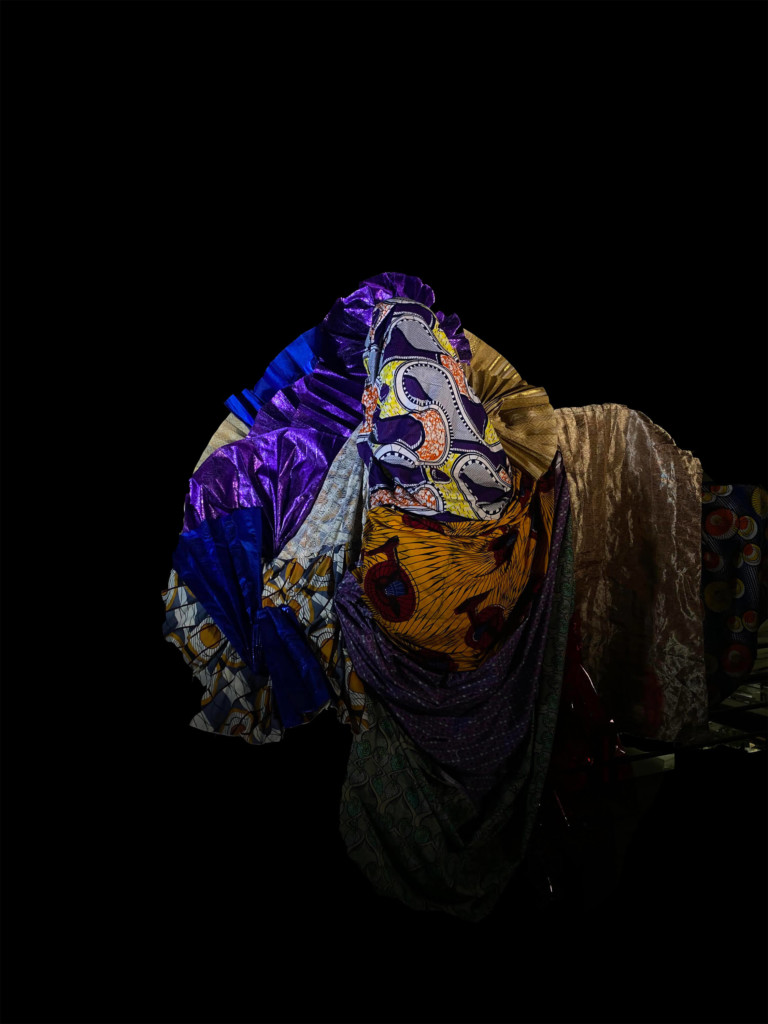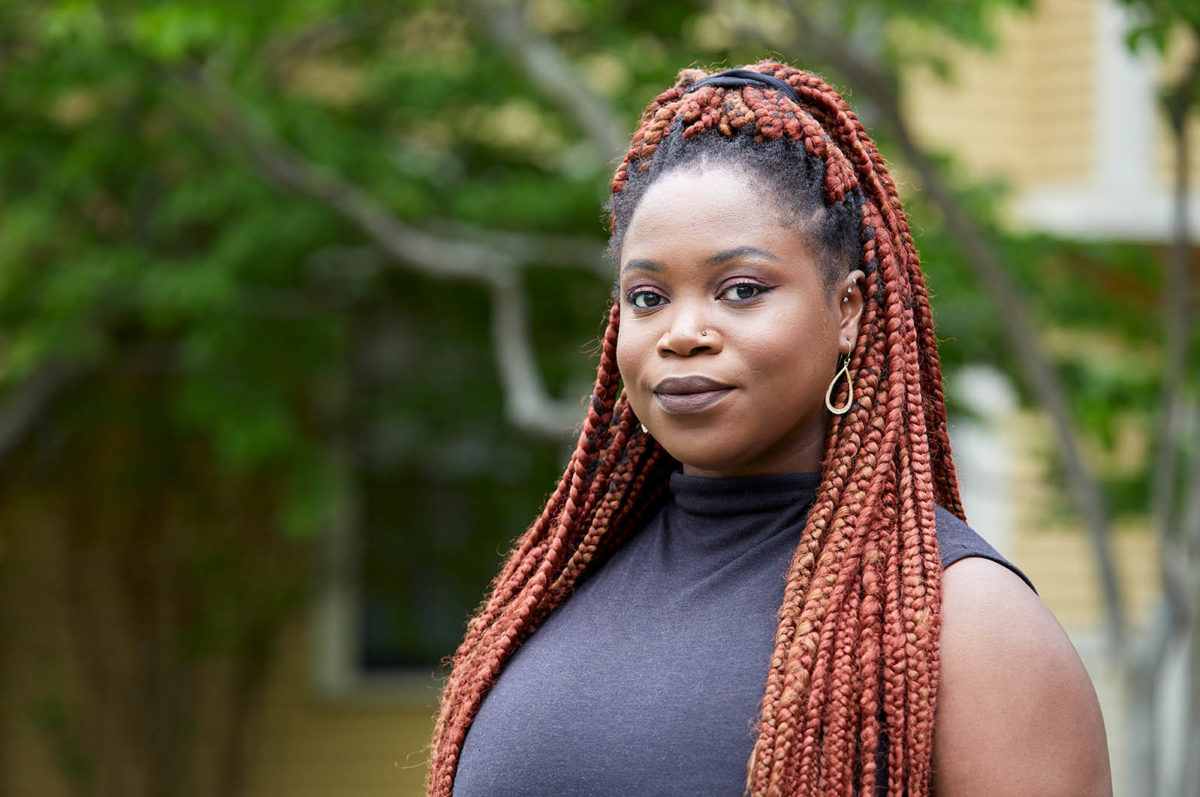A curious stranger at an airport recently asked Omotara Oluwafemi (MArch I ’22) what she was working on. Oluwafemi surprised herself when she responded, “I’m an architect.”
Claiming her identity as an architect and artist took time. Oluwafemi began her undergraduate studies as a math major. “I always liked art, but I thought I couldn’t be an artist or a designer,” she says. A supportive advisor recognized her interest in art history and spatially informed practice, and recommended she take a few architecture studios. She graduated from Amherst with a degree in architectural studies and French, eager to take her work further.
When Oluwafemi visited a Harvard Graduate School of Design open house, she was captivated by the diversity and energy of the student work being shown. She was particularly struck by a project that used the chart-topping song “Bad and Boujee” to frame an approach toward luxurious housing for both wealthy and less privileged residents. “All these people were doing such interesting [work],” Oluwafemi says. It solidified her desire to come to the GSD.
At the GSD, Oluwafemi became an integral part of the school. Sara Arman (MUP ’22) explains, “Tara makes an intentional effort to build community across Black students and students of color.” As part of the African American Design Nexus (AADN), a collaboration between the African American Student Union and the Frances Loeb Library, Oluwafemi helped launch and cohost The Nexus, a podcast exploring the intersection of design, identity, and practice through conversations with Black designers, writers, and educators. She also contributed to an open-access bibliography to highlight Black practitioners and critically reexamine racial discourses in design and architecture.
The GSD is my version of art school. It helped me discover my media and discover my artistic practice.
Omotara Oluwafemi
Oluwafemi is conscious of how vital and meaningful these stories are. “The number of Black practitioners in architecture is so low. We don’t see people who look like us doing the work we want to do, the work that we’re interested in,” she says. It’s important “to have conversations with other Black practitioners, to see them carving out a space for themselves. . . . Black students or Black designers interested in coming after me can listen to [The Nexus] and find a reprieve—or find some joy.”
In turn, Oluwafemi’s professors and peers have expanded and deepened her practice. She remembers one professor who, noticing her tendency to design pavilions and exterior spaces, gently pushed her to design a building next. “It’s been really helpful having professors who can recognize my working style and push me a bit more,” she says. She sees her education as rigorous but open-minded: “There’s a lot of autonomy in the program to really explore your interests.”
Oluwafemi’s thesis benefited from this expansive, generous approach. A studio course with Mack Scogin that invited students to “choose your own site” led to a thoughtful investigation of what casino architecture in space might look like. Her thesis built upon this by imagining an Afrofuturist colony on the moon, informed by Oluwafemi’s Nigerian heritage.

She drew influences from music, history, and fashion: the mystical persona of Sun Ra, an avant-garde jazz musician; the freedom fighter Edward Mukuka Nkoloso, who started a Zambian space program to critique Western colonialism and the excesses of the space race; and the traditional Yoruba aso oke fabric. Aso oke, directly translated, means “high clothing.” “A space suit is something that takes us to a higher place. [What if] the space suit is our new aso oke? How can I design a new aso oke to take us to space?,” Oluwafemi says.
Reflecting on the power of Afrofuturism and science fiction, she explains: “Science fiction removes itself from the current state of things to [show] a possible future condition. Sometimes it’s easier to say: In the imaginary world, things are better. [Then] you realize: actually, we could implement that now. That’s not so radical.”
Going forward, Oluwafemi hopes to use her architectural knowledge and “apply it in places outside the traditional path.” “The GSD is my version of art school,” Oluwafemi says. “It helped me discover my media and discover my artistic practice.”
Read more profiles from the GSD Class of 2022.
